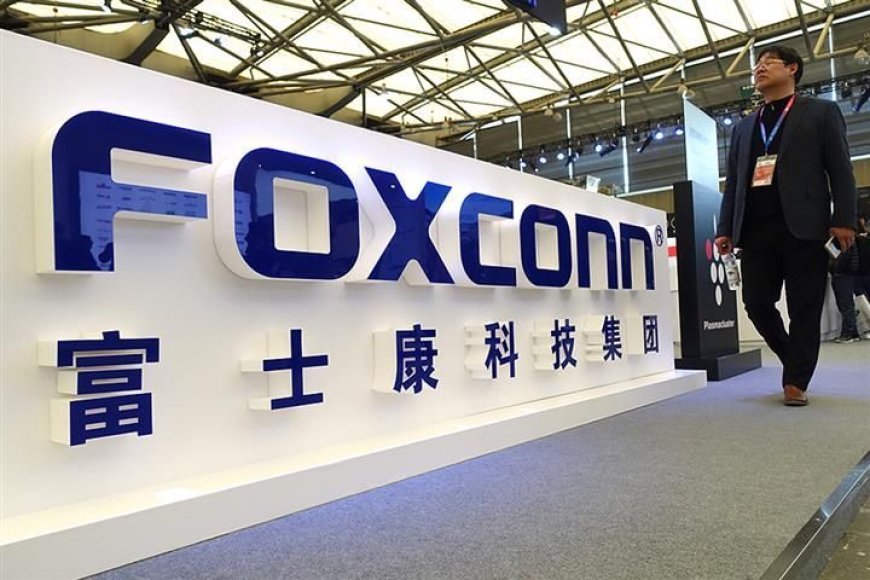Foxconn is No Longer Apple’s iPhone Factory Floor – What is It Building Now?
Foxconn is no longer Apple’s iPhone factory floor; it is now building EVs, semiconductors, and AI tech to diversify beyond smartphones.

Introduction
For decades, Foxconn has been synonymous with Apple’s iPhone production, serving as one of the world’s largest electronics contract manufacturers. Known as the “iPhone factory floor,” Foxconn played a crucial role in scaling Apple’s global smartphone empire. However, the landscape is shifting. Foxconn is no longer just Apple’s assembly powerhouse—it is diversifying into new industries, reflecting global market pressures, technological trends, and geopolitical challenges.
A Brief History
Foxconn, officially known as Hon Hai Precision Industry Co., was founded in 1974 in Taiwan. It became globally recognized when it partnered with Apple in the early 2000s, producing millions of iPhones annually. With massive factories in China, including the world-famous Zhengzhou facility (often called "iPhone City"), Foxconn employed hundreds of thousands of workers. For years, over half of Foxconn’s revenue depended on Apple’s iPhone production, cementing its identity as Apple’s most important supplier.
Why Foxconn is Moving Beyond iPhones
Several factors have pushed Foxconn to diversify:
Geopolitical tensions: U.S.–China trade conflicts and global supply chain disruptions have pressured Apple and Foxconn to reduce dependence on China.
Labor unrest and rising costs: Protests, worker shortages, and wage hikes in China created challenges in scaling iPhone production.
Market saturation: Global smartphone growth has slowed, limiting Apple’s demand compared to the booming years.
New opportunities: Foxconn sees higher growth in emerging sectors like electric vehicles (EVs), semiconductors, and AI-driven hardware.
What Foxconn is Building Now
-
Electric Vehicles (EVs): Foxconn has shifted focus towards building EV platforms and components. It has launched the MIH Consortium, an open EV platform, and is collaborating with companies like Fisker and Stellantis to manufacture electric cars.
-
Semiconductors & Chips: Recognizing the chip shortage crisis, Foxconn is investing in semiconductor design and fabrication to strengthen supply chain resilience.
-
AI & Robotics: With automation on the rise, Foxconn is also building AI-enabled robotic systems to support next-generation manufacturing.
-
Data Centers & Cloud Computing: Foxconn is partnering with tech firms to construct advanced data centers and servers, tapping into the digital infrastructure boom.
Key Points & Updates
-
Foxconn is actively reducing its overreliance on Apple by expanding partnerships with automakers, chipmakers, and cloud companies.
-
In India, Foxconn continues to assemble iPhones, but globally, it is balancing its portfolio to mitigate risks.
-
The company aims to generate more than half its revenue outside Apple contracts by the next decade.
Importance & Significance
Foxconn’s transformation carries global significance:
-
For Apple: It means diversifying suppliers and potentially facing reduced bargaining power with Foxconn.
-
For the tech world: The rise of Foxconn in EVs and chips may reshape industries traditionally dominated by Tesla, TSMC, or Intel.
-
For global economies: Countries like India, Vietnam, and Mexico are benefiting as Foxconn expands operations beyond China.
Advantages and Disadvantages
Advantages:
-
Diversification reduces dependency on one client (Apple).
-
Entry into EVs and chips positions Foxconn in high-growth sectors.
-
Global expansion opens new revenue streams and job opportunities.
Disadvantages:
-
Heavy investments in new industries carry high risks.
-
Competing against established EV and semiconductor giants is challenging.
-
Reduced Apple production could affect short-term revenue stability.
Positive and Negative Outlook
Positive: Foxconn could emerge as a global leader not only in consumer electronics but also in EVs, chips, and digital infrastructure, shaping future industries.
Negative: If diversification fails, Foxconn risks spreading itself too thin, losing focus, and weakening its dominance in existing markets.
Final Thoughts & Conclusion
Foxconn is no longer defined solely as Apple’s iPhone factory floor. Instead, it is evolving into a diversified tech powerhouse, venturing into EVs, semiconductors, and digital services. This shift reflects a broader transformation in global supply chains, where companies seek resilience, innovation, and growth beyond traditional industries. While challenges remain, Foxconn’s bold pivot signals that the future of manufacturing lies in adaptability and expansion.
In essence, the world’s most famous contract manufacturer is no longer just making smartphones—it is building the next generation of technology.

 Ellofacts
Ellofacts 





